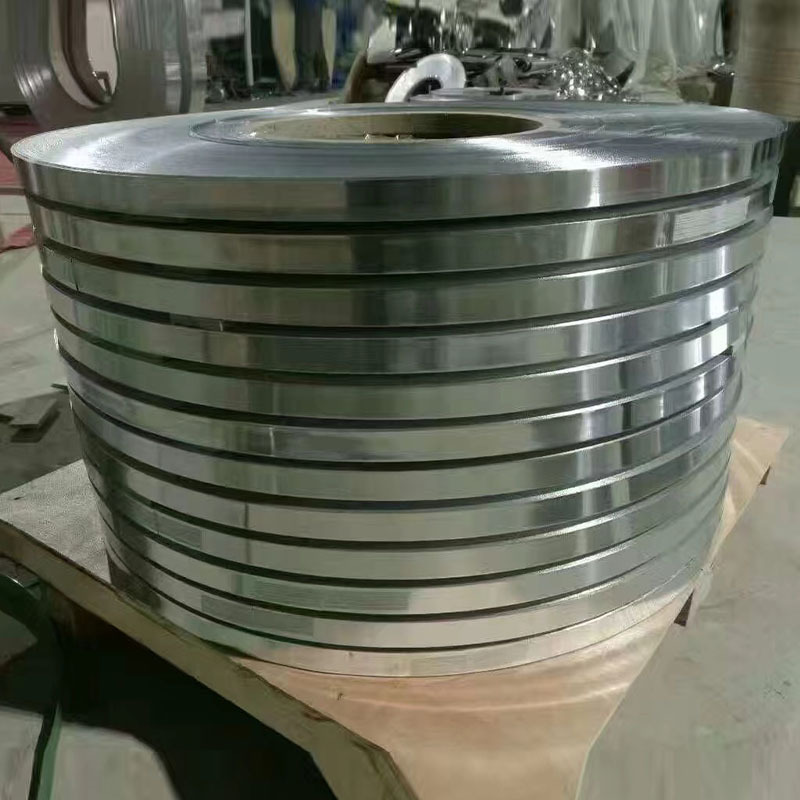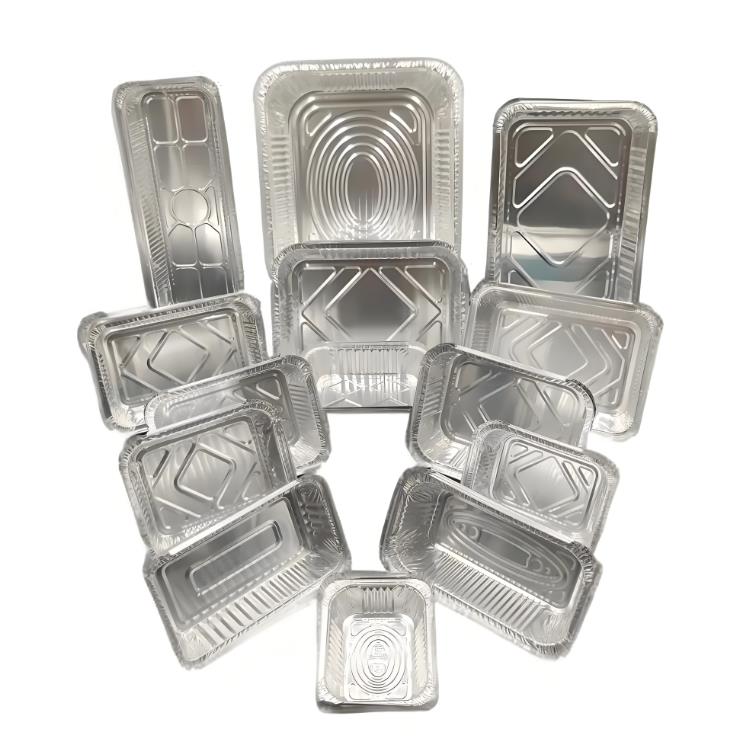Aluminum Packaging for Pharmaceutical: What You Need to Know
Pharmaceutical packaging is more than just a protective covering—it is a critical component that ensures the safety, stability, and efficacy of medicines. Among various materials, aluminum has emerged as a frontrunner, offering unparalleled protection and versatility. Its unique properties make it indispensable for safeguarding medications against environmental factors while meeting the demands of modern sustainability goals. This article explores the benefits of aluminum in pharmaceutical packaging, its main types, and how it compares to other materials like plastic and glass.
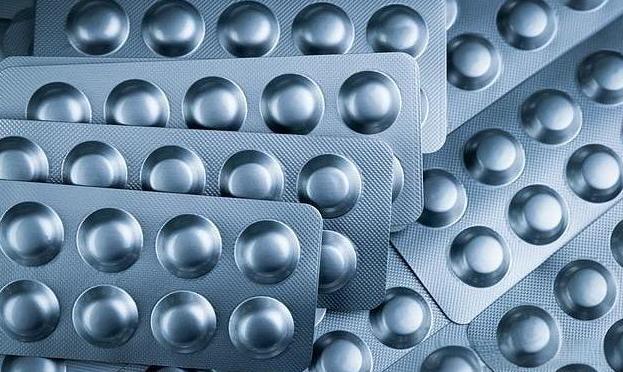
Benefits of Aluminum in Pharmaceutical Packaging
Aluminum is widely used in pharmaceutical packaging because it addresses some of the most pressing challenges in the industry, including protection, safety, and sustainability. Its properties make it ideal for preserving the quality of sensitive medications.
- Superior Barrier Protection: Aluminum provides an excellent barrier against moisture, oxygen, light, and external contaminants. This ensures that medicines remain potent and safe throughout their shelf life.
- Lightweight and Durable: Aluminum is strong yet lightweight, reducing transportation costs and minimizing the risk of damage during handling.
- Tamper-Evident and Secure: Its ability to seal medicines securely offers tamper evidence, ensuring consumer safety and regulatory compliance.
- Sustainability: Aluminum is highly recyclable, making it a preferred choice for eco-conscious pharmaceutical companies.
The benefits of aluminum make it a cornerstone of modern pharmaceutical packaging, providing a reliable solution for maintaining the integrity and safety of medicines.

Main Types of Aluminum Packaging for Medicine
Aluminum packaging comes in various forms, each tailored to specific pharmaceutical applications. These types address diverse needs, from ensuring sterility to enhancing convenience for users. Some common types are:
| Type of Packaging | Description | Applications | Key Benefits |
| Blister Packs | Plastic cavity sealed with aluminum foil. | Tablets, capsules, small medical devices. | Airtight, moisture-resistant, tamper-evident, convenient for individual doses. |
| Aluminum Foil Strips | Laminated foil encasing single doses. | Tablets, powders, granules. | High barrier protection, lightweight, portable. |
| Cold-Formed Foil (Alu-Alu) | Fully aluminum blister packs with no plastic. | Sensitive and high-value medications. | Maximum barrier protection, extended shelf life. |
| Aluminum Tubes | Cylindrical tubes with a nozzle for dispensing. | Creams, ointments, gels, topical medicines. | Flexible, easy to use, prevents contamination with single-use applications. |
| Aluminum Vials & Containers | Cylindrical containers or bottles with secure closures. | Liquid medicines, sterile injectables. | Lightweight, shatterproof, excellent sterility protection. |
| Aluminum Pouches & Sachets | Multi-layered aluminum laminates sealed into small pouches. | Powders, granules, single-dose liquids. | Compact, lightweight, ensures product stability. |
| Aluminum Aerosol Cans | Cylindrical pressurized aluminum containers. | Inhalers, sprays, topical anesthetics. | Hygienic, corrosion-resistant, precise metered dosing. |
| Aluminum Caps & Closures | Aluminum-made caps or seals for vials and bottles. | Liquid medications, syrups, injectables. | Secure sealing, tamper-evident, protects against contamination. |
The versatility of aluminum packaging types ensures that pharmaceuticals of all forms—solid, liquid, or aerosol—can be safely stored and transported.

Comparison with Other Materials for Pharmaceutical Packaging
Pharmaceutical packaging materials must meet stringent requirements to ensure the safety, efficacy, and longevity of medicines. While aluminum, plastic, and glass are all widely used, each has unique properties that affect its suitability for different applications. Below is a detailed comparison of aluminum with plastic and glass:

Aluminum vs. Plastic
| Aspect | Aluminum | Plastic |
| Barrier Properties | Provides an excellent barrier against moisture, oxygen, light, and UV rays, ensuring product stability. | Offers some protection but is less effective at blocking light, oxygen, and moisture. |
| Durability | Lightweight yet highly durable and resistant to punctures and physical damage. | Less durable and more prone to deformation, especially under high stress or heat. |
| Sustainability | Infinitely recyclable without losing quality, with high rates of global recycling. | Recycling is less efficient; only a fraction of plastic is recycled, and quality often degrades. |
| Cost | Higher initial cost but offers long-term benefits in terms of protection and sustainability. | Cheaper to produce but less effective for long-term protection and environmental impact. |
| Applications | Best for sensitive medications requiring strong barrier protection, such as blisters, strips, and vials. | Commonly used for syrups, bulk storage, and less-sensitive products. |
Aluminum outperforms plastic in terms of protection and environmental impact, making it a better choice for high-value and sensitive pharmaceuticals. However, plastic’s lower cost and versatility make it suitable for non-critical applications.
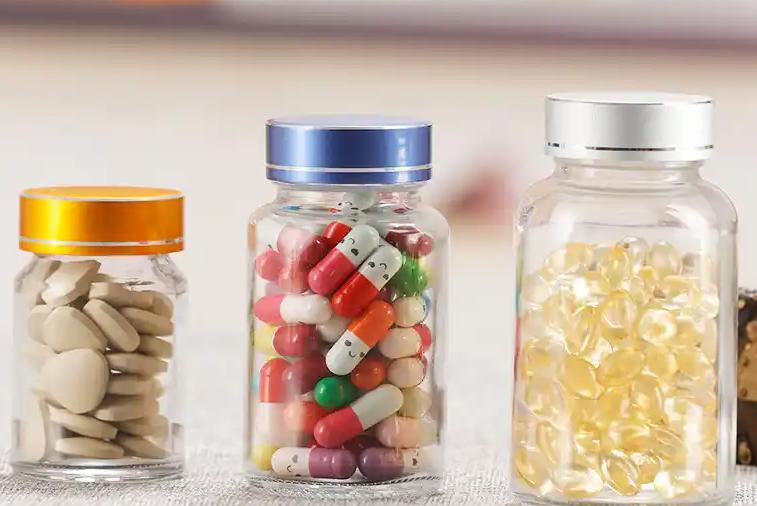
Aluminum vs. Glass
| Aspect | Aluminum | Glass |
| Barrier Properties | Offers an impermeable barrier to moisture, air, and light, maintaining product stability. | Also provides excellent barrier properties but lacks aluminum’s lightweight advantages. |
| Weight | Significantly lighter than glass, reducing transportation costs and improving portability. | Heavy, which increases transportation costs and is less convenient for consumers. |
| Durability | Shatterproof and resistant to breakage, making it safer for storage and handling. | Brittle and prone to breaking, leading to safety concerns during transportation and use. |
| Sustainability | Easily recyclable with a low energy footprint for recycling. | Also recyclable but requires more energy for the recycling process compared to aluminum. |
| Cost | Cost-effective in terms of handling, shipping, and manufacturing. | Higher production and transportation costs due to weight and fragility. |
| Applications | Ideal for blister packs, tubes, aerosol cans, and cold-formed foils. | Primarily used for liquid storage (vials, ampoules) and high-sterility medicines. |
While glass excels in sterility and offers excellent barrier properties, aluminum provides similar protection with added advantages like lighter weight, durability, and cost efficiency.
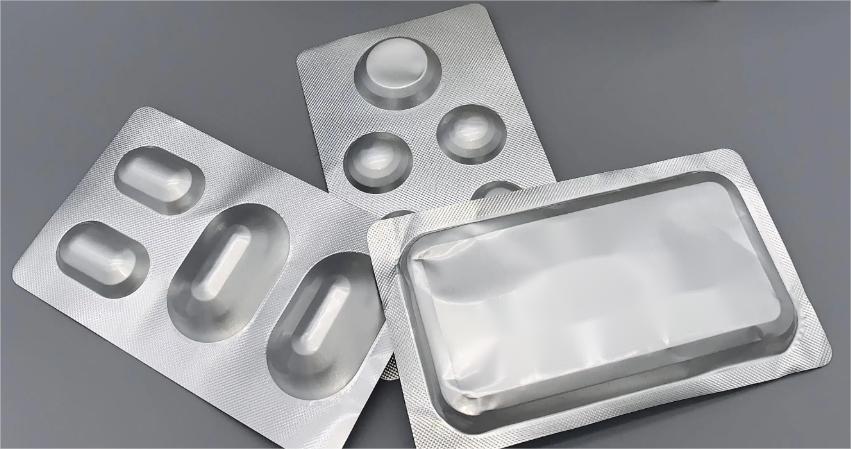
Aluminum‘s Advantages Over Plastic and Glass
- Superior Protection: Aluminum’s barrier properties outperform plastic and rival glass, making it ideal for sensitive medications.
- Lightweight Durability: Aluminum is lighter and more durable than both plastic and glass, ensuring safer and more cost-efficient transport.
- Eco-Friendly: Aluminum’s recyclability is superior to plastic’s and more energy-efficient than glass recycling.
- Versatility: Aluminum can be used in a wide range of applications, from foil strips to aerosol cans, which plastic and glass cannot fully match.
While each material has its niche, aluminum stands out as the most versatile and sustainable option for pharmaceutical packaging. Its unique balance of protection, durability, and environmental benefits ensures that it meets the needs of the pharmaceutical industry better than plastic or glass in most scenarios.
Aluminum has redefined pharmaceutical packaging with its exceptional ability to protect medications, reduce environmental impact, and meet industry standards. As the pharmaceutical industry continues to prioritize safety, innovation, and sustainability, aluminum packaging is set to remain a key player. Lanren is a professional manufacturer of aluminium material for pharmaceutical and cookware etc. Please feel free to contact us for your aluminium needs.
Related Products





